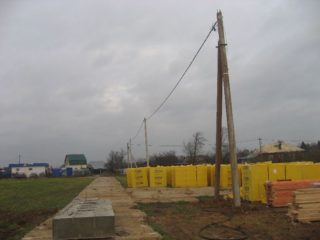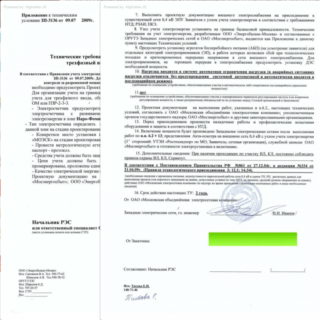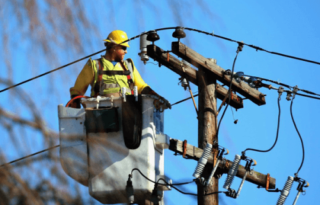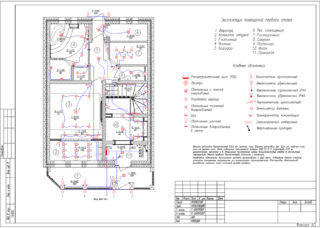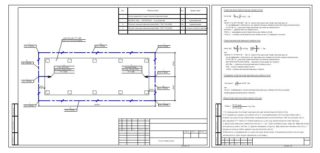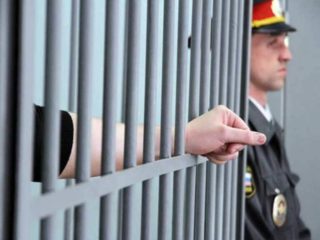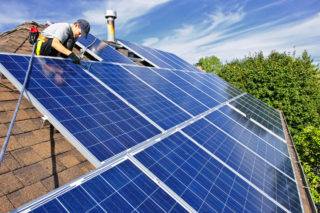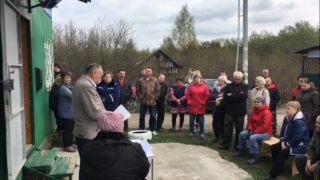Apartment buildings in the city are equipped with all systems of amenities, including electricity and gas, water, heating. Country houses and cottages do not have such systems; they must be carried out independently. The process of conducting electricity to the land is impossible without observing the technical requirements and the legality of the procedure. The landlord must obtain permission to electrify, develop and coordinate the project, and only then do the wiring. All formalities must be followed. To do this, you need to contact various structures. In case of illegal connection, the owner of the site faces a penalty up to criminal liability and imprisonment.
Filing an application
Connecting electricity to a summer cottage is not just a cable pull, but a whole procedure that requires obtaining permits from the relevant state bodies. Technological connection is regulated by Government Decision No. 861 of December 27, 2004. According to this document, connection can be made only after concluding an agreement with a company that owns the power lines closest to the site.
To comply with the legality of the procedure, the owner must draw up and submit an application to the organization in any way convenient for him - personally, by mail or online. The application is prepared according to a specific plan, samples can be found in the relevant network firms.
Before you connect electricity with IZHS you need to sign an agreement. To conclude it, there must necessarily be the availability of technical connectivity. You can get it only subject to the technical conditions. They are sent by the network organization to the owner of the site together with the draft contract within 15 days after the acceptance of the application. Within 30 days, the applicant must familiarize himself with the contract and technical conditions, then sign the papers and transfer one copy to the network company. If the deadlines are not met, the application will be canceled. The conditions can be negotiated with the service provider - then it is possible to extend the time period set by the network company.
It is important to note that the operator does not have the right to refuse to connect to the applicant. Even if the site is far away, the company must consider the application and send the necessary documents and specifications. In case of refusal to consider the application, the applicant may sue the organization.
Before signing a contract with a company, you should make sure that it has the appropriate licenses and certificates. This will avoid the risk of entering into an agreement with fraudsters and loss of funds.
Documents required to connect electricity to the site
In addition to the application, the owner must collect and submit the following package of documents:
- The plan for the placement of devices that receive electricity: a fragment of the cadastral map with the boundaries of the plot, urban development plan, etc.
- The scheme of electric networks for consumers with a rated voltage above 35 kW.
- Proof of ownership.
- The list of connected devices indicating the power.
- Copy of the applicant’s passport.
The network operator cannot request other types of documents. This list is established by law and cannot be changed.
What should be in the application for connection
The application is compiled in a strictly regulated form. According to the rules, it must contain the following data:
- Information about the applicant and passport details.
- Place of actual residence.
- Names and locations of connected devices.
- Duration of project preparation.
- Duration of commissioning.
- The name of the network company.
- The requested power (for household appliances no more than 15 kW).
The application may be submitted in any way. It can be brought personally to a branch of a network company, sent by mail or through an electronic portal. In the latter case, the owner of the cottage should have an account on the website of the State Services. A sample can be obtained from a network organization.
Connection costs
The price of conducting electricity to the site depends on many factors. These include:
- requested power;
- distance from the site to the distribution facility;
- the number of electrical supply devices;
- technical conditions.
Individuals pay a fixed cost of 550 rubles subject to the following conditions:
- The distance to the distribution point is 300 meters or 500 meters for the countryside.
- The requested power does not exceed 15 kW.
- No more than one source of supply is used.
All costs associated with conducting cables on the site, arranging poles and installing meters, the customer pays for himself. The price with all components can reach 50 thousand rubles. It all depends on the requirements, the selected equipment and the individual characteristics of the site.
Create an electrification project
When the technical conditions are agreed and the contract is signed, you can create an electrification plan. There are two types of projects:
- External electrification. Laying networks on the site outdoors.
- Internal electrification. Arrangement of the electric network in rooms of all types (house, garage, barn and others).
Private organizations are engaged in the creation of an external electrification plan according to the technical requirements of the operator. The price of services depends on the complexity of the work.
Any project contains a graphic and text part. The graphic should contain the following data:
- image networks indicating the boundaries of the site;
- installation location of metering device4
- a plan for connecting cables from the support to the transformer;
- grounding plan with a detailed description of the parts used;
- layout of electrical equipment.
In the text part are written:
- characteristics of energy sources;
- description of the electrification project;
- data on the number of connected devices and their load;
- information about cables, lighting;
- single-line power supply circuit.
Next, you can proceed to supply electricity to the site in the village.
Rules for connecting land to the electricity grid
The network operator performs only the bringing of electric lines to the ground. All other installation work is carried out by the owner. The applicant can contact a private organization that will help conduct electricity or make a pipe stand for the input of electricity with his own hands.
When laying cables, the conditions must be observed. The wiring is performed by one of two methods - by air and underground. Before you conduct electricity to the site, you should familiarize yourself with the requirements of different types of wiring. When air laying, the following points must be observed:
- maximum distance between supports - 15 m;
- the distance from the last support to the entrance to the house is not more than 10 m;
- maximum point above ground level of cable slack 6 m, minimum - 3.5 m;
- lack of touch of vegetation, trees and other objects;
- the cable enters the building at a height above 2.75 m;
- minimum cross-section of SIP cable is 16 mm.
For underground cabling:
- Depth from 80 cm.
- The protective pipe must be raised to a level of at least 2 m of support from which the wires go to the ground.
- The cable is laid in a protective pipe or corrugation.
- At 25 cm from the wires, a signal tape is laid that reports the presence of electrical cables.
- The width of the trench is 30-40 cm or more.
- The wire must be checked for operability before digging.
Air laying is cheaper and more practical, especially in areas without buildings. When IZHS with buildings underground wiring is done.
Verification and Connection Procedure
After the application for connecting electricity to the land plot was submitted and considered, the contract was signed and the technical conditions were met, the owner notifies the network company about this. It is necessary to submit an electrification plan, technical data sheets of equipment. Further, compliance with the technical conditions is checked and equipment is inspected, including the pipe rack for electricity. Check time is agreed in advance with the owner of the cottage.
If during the inspection the inspector reported that everything was done correctly, acts should be drawn up:
- Inspection of electrical equipment.
- On the implementation of technical specifications.
- About technological connection.
- About the admission of the meter.
- The boundaries of the balance sheet.
- Operational responsibility.
All documentation should be issued free of charge. Raising funds for the procedure is prohibited by law.
An agreement is made with a company that is engaged in power supply. After signing the contract, the user can legally use the power grid. The electrification process takes 4-6 months.
What threatens spontaneous connection
The above procedure is official and legal. When circumventing the legally established procedure, the owner may suffer the following penalties:
- Compensation for damage in the amount of the estimated amount of electricity. After that, you need to go through all the stages of electrification in accordance with the law.
- Administrative responsibility. For individuals, the fine may be 10-15 thousand rubles.
- Criminal liability with a fine of up to 300 thousand rubles, forced labor, imprisonment for up to 2 years.
The risks are unjustified, therefore it is easier and safer to connect to the network in accordance with the law.
Alternative types of energy
Alternative energy sources are in great demand. They are independent of network companies so they can be started without going through the electrification process. You can connect the light in the area using an alternative method yourself.
The most common sources of alternative electricity to the site are:
- Solar energy. Using solar panels, they get electricity and heat. The disadvantages include the dependence on weather conditions. In winter, such devices cannot operate at full power. The cost of a complete system for a suburban area is approximately 130 thousand rubles.
- Wind power. This is one of the most affordable, simple and promising methods for autonomous production of electricity. The system costs about 90 thousand rubles. A generator with a capacity of 3-5 kV / h is enough to provide electricity to an ordinary house. Disadvantages include device noise and inconsistency of the wind situation.
- Geothermal energy. This is the most technologically sophisticated process for generating electricity. Energy is derived from steam from geothermal sources. The main drawback is the dependence on geographical location, which is why it is not possible to use this type of energy everywhere.There are 6 geothermal power plants in Russia.
All types of autonomous energy can be used together with power supply from the nearest point. For example, solar energy is often used for lighting. They can also be used as a backup source of energy in the event of a power outage or power outages.
Electrification of Garden Associations
The entire procedure described is suitable for connecting private homes. The connection of light on the plot of garden non-profit partnerships (SNT) or agricultural purposes occurs according to a different algorithm. New rules for connecting to power networks in SNT were developed. It is not the owner who is involved in the connection, but the appointed representative of the partnership. The issue of electrification is raised at a meeting of gardening members.
Networks are held to the borders of partnerships. To each site, electricity is carried out by the joint forces of the partnership.
The total cost consists of a mandatory fee of 550 rubles from each site and the price of infrastructure. The average cost is approximately 30-35 thousand per owner. How much the connection costs depends on various factors - the choice of materials, location, features of the territory, climatic conditions.
If people voted against, any owner has the right to independently connect to electricity without their consent. He receives and pays for all expenses, as well as permission for electricity.
Electricity Tariffs
The cost of electricity depends on the type of settlement and the region in which it is located. Residents of rural areas have electricity benefits. Usually the discount is 30%, but it may vary depending on the region.
The privilege can only be received by residents who have the official status of a rural municipality. Otherwise, the cost set by the city is paid. Similarly for residents of urban settlements. They pay at the city tariff, regardless of the state of infrastructure and the level of income in the village.
